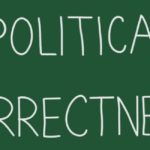Affinity bias and cultural fit plays safe and stifles diversity
Affinity bias is defined as:
preference for certain types of people for whom they have an affinity, such as respondents who are similar to them or that they find attractive, and including them in the sample at higher rates than others.
“The right fit” is a phrase I hear repeatedly in the hiring process. It’s a catchall term that covers a multitude of sins related to making sure that potential candidates will slide seamlessly into the prevailing corporate culture. This is supposed to guarantee onboarding success, but it also means that no boats will be rocked. It’s the safe and non disruptive option. Affinity bias occurs when hiring managers show a marked preference for candidates to whom they can relate which can play an over arching role in many selection decisions.
The role of trust
Philippe is a French investment banker who joined a London-based outfit in 2014. Within 12 months the team had taken on a number of new hires all of whom were French-speaking, as either a first or second language. They were French, Belgian, Moroccan, and Québécois. All without exception had attended a “Grandes Ecoles,” the French equivalent of a top Ivy League school. Although Philippe seemed open to interviewing and considering candidates with more diverse backgrounds, in the end the more familiar and dependable candidates prevailed. It was all about his perception of “fit.” They made him feel comfortable. He was confident about their rigorous academic backgrounds and knew he could count on them and trust them when needed.
Read: Top 5 videos that highlight and tackle unconscious bias
The role of chemistry
The reality is we all have a preference to being around people we click with either on a personal or professional basis. You will frequently hear the phrase “the chemistry wasn’t right” as a reason for debriefing candidates. So if we all prefer working or having relationships with individuals who make us feel secure and feel we can trust, then the converse also applies. Why would we choose to be around people who make us feel insecure, ill at ease and as if we are not in reliable and trustworthy hands?
So in a personal setting it can make sense, even if it might be a little limiting. Affinity bias works. But in a professional sense it means we are restricting our hires or network contacts to PLU (People Like Us) or Mini-Mes based on affinity bias. Aren’t we repeatedly told that people do business with those they like and trust?
This bias can be based on race, age, religion, schools attended, or any other distinguishing demographic feature. But even within primary cultures there can be sub-groups. A German electronics company reported a logistics function where the team was comprised of hires from the Indian sub-continent because the EVP was Indian. So one of the major deciding components is the influence and power of senior stakeholders on hiring decisions.
Read: OPINION: The business case for diversity is just offensive
Impact on diversity and inclusion
With affinity bias being so pervasive and embedded in different ways into corporate culture – how can we successfully achieve diverse and inclusive organisations? The absence of diversity at senior levels contributes to perpetuating the problem of exclusion especially women, older demographics and minority groups. This is why it’s so important to have women in decision-making roles.
The answer is to proceed with mindful intention. We have to have inbuilt systemic checks and balances to ensure that the diversity message prevails. This is not an easy process, as changing human behaviour long-term has only a 20% success rate. What we need is to create is a culture which is open to receiving feedback and which allows us to question any potential affinity bias influencing a key decision-making process. Organisations which are open to having this type fo dialogue are taking a step in the right direction.
Read: The value of Mindfulness in Recruitment
Most organisations are confused about what diversity and inclusion really means let alone making it happen. But any benefits gained in shifting to a truly diverse hiring culture fail very quickly if employees feel uncomfortable challenging the prevailing views.






Pingback: Steps to Filtering Out Hiring Bias • Bee Line Consulting, LLC